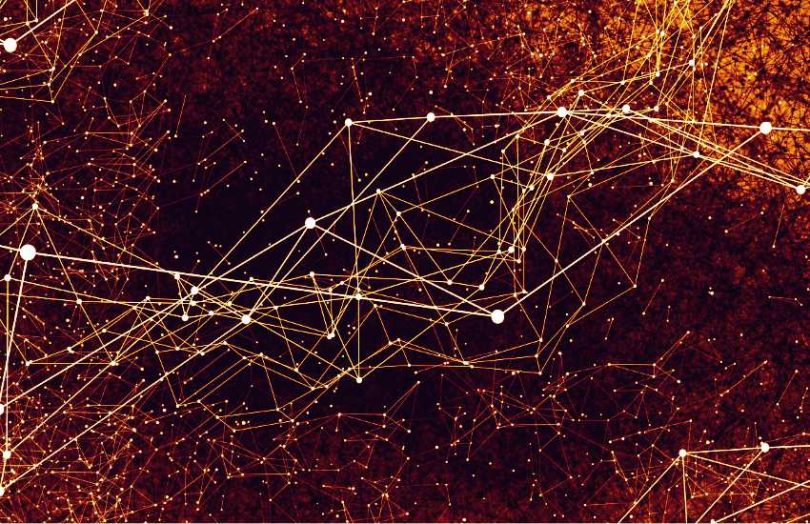Today Digital Asset, known for its DAML smart contract language, unveiled plans for the Canton Network, a network of blockchain networks enabling interoperability for financial institutions. Thirty organizations will participate in the network starting in July, including major Digital Asset clients such as BNP Paribas, Deutsche Börse Group, Goldman Sachs and Equilend.
While there’s a belief that the future of institutional finance revolves around blockchain and tokenization, to date, many of the efforts create new siloed blockchains. And a key benefit of a distributed ledger was precisely to address silos. Interoperability is the answer to unlocking the tantalizing potential of composability and collateral mobility.
Public blockchains have shown the way, particularly on these two points, although Digital Asset has no plans to integrate with them. “They’ve created absolutely the North Star of what’s possible,” said Digital Asset’s Eric Saraniecki.
“I don’t ever want to say that they’re not good or they’re bad. They’re just not fit for purpose for regulated financial institutions.”
He compared public blockchains to Napster. While Napster laid the groundwork for digital music, it was risky to use. The IP-licensed and user friendly Apple iTunes put digital music on the map.
“On a public blockchain you have to use the same set of validators. You have to compete for bandwidth on the network. All your data is completely transparent. Those are complete non starters for a regulatory compliant institution,” added Saraniecki.
DAML applications and the Canton Network are privacy preserving by design. At the same time, an application developer can choose to make their app fully accessible to the public.
What’s new about the Canton Network
DAML applications already support interoperability, so the Canton Network needs a little explanation.
While earlier versions of DAML didn’t use a particular blockchain, applications built with DAML 2 use the Canton blockchain. So this new network of networks is a network of Canton blockchains.
DAML is known for its support of different blockchain technologies. Hence applications can optionally use other enterprise blockchains to enhance some of the trust properties, but the core data is stored on Canton. And Canton blockchains can already interoperate with other Canton blockchains, although some work is involved.
The idea of the Canton Network is to create a neutral third party zone that’s easy to connect for interoperability. It lowers the interoperability barrier.
R3 launched the Corda Network years ago for dApps using its DLT, so the concept isn’t new, but the approach has some differences.
There are two critical aspects that blockchains aim to achieve. One is time-stamping the order of transactions, which is essential when trading is involved! The other is verifying the validity of transactions. While the Corda Network targets both, the Canton Network focuses on time-stamping or sequencing, which helps to preserve privacy and enhance scalability.
Saraniecki gave an analogy with the postal system, where you have a mailbox and a sorting facility. Each Canton application runs its own sorting facility. Applications that want to connect to each other can run a shared sorting facility for connected transactions.
Rather than creating a shared sorting facility, these applications can use the Canton Network, which provides a decentralized sorting facility infrastructure, an independent way of ordering transactions. But it is not a validator, so it doesn’t see the contents of the transactions helping to preserve privacy. Instead, transactions are sent to the destination app, which confirms whether it makes sense or not.
The absence of shared validators helps with scalability. Provided applications have independent workflows, they can have an additional network to scale.
Different approaches to blockchain interoperability
There are numerous approaches to blockchain interoperability, none of which have gained major traction so far, and each with pros and cons. Hence the Canton Network is timely.
In Japan, DataChain is working with MUFG using Cosmos technology to enable MUFG’s Progmat Coin platform to be used for settlement across DLTs with different technologies, and Hyperledger has its Cacti interoperability protocol. These are both based on blockchain technology.
Ownera’s finP2P eschews blockchain and provides a conventional routing system between different blockchain applications. The big drawback is you have a startup as a trusted intermediary, and some see it as a throwback to current approaches. However, one big advantage is that it’s entirely agnostic to the blockchain technology involved.
In contrast, both the Corda and Canton Networks target applications that use their technologies.
Whatever the approach, there is no question that a network of networks is the future of institutional finance. The faster we get there, the sooner the financial benefits will be seen.
Full list of Canton Network participants
3Homes, ASX, BNP Paribas, Broadridge, Capgemini, Cboe Global Markets, Cumberland, Deloitte, Deutsche Börse Group, Digital Asset, DRW, Eleox, EquiLend, FinClear, Gambyl, Goldman Sachs, IntellectEU, Liberty City Ventures, Microsoft, Moody’s, Paxos, Right Pedal LendOS, S&P Global, SBI Digital Asset Holdings, The Digital Dollar Project, Umbrage, Versana, VERT Capital, Xpansiv, and Zinnia.






